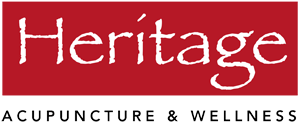Acupuncture and Herbal Medicine
What type of education do acupuncturists receive?

Janet Lee, L.Ac., MSTOM, Dipl. OM received her training in California, where acupuncturists complete some of the most rigorous and thorough Oriental medical education in the U.S. California graduates now receive more than 3,000 hours of accredited education, including training in a clinical setting. California graduates also must train and become licensed in Chinese herbology.
Other aspects of Oriental medical training include the study of anatomy, physiology, pathology, clinical counseling, therapeutic massage, and Chinese medical nutrition.
Only Licensed Acupuncturists (L.Ac.) receive this level of training. Medical professionals who also practice acupuncture frequently receive training in certificate courses with as little as 40 hours of instruction. These courses do not include information on the detailed diagnosis, theory, herbalism, and related modalities included in a complete Oriental medicine degree.
Understanding Traditional Chinese Medicine
Acupuncture is the only modality in the Traditional Chinese Medicine (TCM) system. TCM is a complete medical system with ancient roots and many modern branches. Within this system are acupuncture, moxibustion, herbology, massage, qi gong or therapeutic movement, nutrition and topical treatments such as cupping and gua sha.

Traditional Chinese Medicine theory has a 2,500-year-old history, with its first published records in the Yellow Emperor’s Classic of Internal Medicine (Huang Di Nei Jing). Major principles of Chinese medical theory include the concept of qi and meridian pathways – or the flow of energy in specific channels in the body. Disruption of qi or blood can result in pain, organ malfunction or other disorders. The primary purpose of acupuncture is to regulate and harmonize the flow of qi and blood. A major advantage of the fine, hair-thin needles employed in acupuncture treatments is their ability to target extremely specific tissue. For example, an acupuncturist can treat a spasm in a specific muscle or pain in a certain joint.
Chinese herbology employs the use of over 6,000 medicinal substances, which include food products, roots, rhizomes, and minerals. Some Chinese herbs, such as ginger and cinnamon, are common household seasonings. Chinese herbalism, which all licensed acupuncturists must legally practice in California, involves the use of herbal combinations known as formulas. Herbal formulas are constructed according to each patient’s individualized diagnosis. Combining herbs into formulas requires training, expertise, and skill. Chinese herbs are capable of delivering profound results with few side effects.
Related modalities such as gua sha, cupping and moxibustion give the Oriental Medicine practitioner more tools to relieve your conditions. Moxibustion is the use of the herb mugwort, which is frequently rolled into cigar form, lit, and held over points for a warming and circulation-enhancing effect. Cupping, a technique used throughout the world, involves glass suction cups often placed on the back to relieve chest congestion and muscle tension. Gua sha is a form of cutaneous stimulation that helps relieve chronic pain. Together, these modalities give the Oriental Medicine practitioner a powerful set of tools to treat your condition externally, internally, and energetically.
For more information about Oriental Medicine, visit our Resources page.
Conditions Treated

Traditional Chinese Medicine (TCM) is a powerful and versatile medical system capable of treating a wide range of conditions. With acupuncture, TCM can focus on a specific muscle, organ or symptom. With Chinese herbology, practitioners can custom-design formulas for a specific presentation. For example, two people suffer from asthma. One has a dry cough and the other has a productive cough. Each patient requires different acupuncture points and an individualized herbal formula. Determining these customized therapies requires much expertise.
By adding other practices, such as nutritional therapy, Chinese medicine can treat not only the condition or acute symptom but the underlying imbalance contributing to it. As practitioners of Oriental Medicine, our goal is to relieve symptoms and provide information about the lifestyle, diet, or other factors that sustain health.
Listed below are some of the conditions that commonly respond well to TCM. If you’d like more information about how Chinese medicine can help you, feel free to write to:
Pain:
Neck pain, back pain, sciatica, tendonitis, arthritis, headaches, migraines, sprains, muscle tension, tooth pain, gout
Neurological disorders:
Trigeminal neuralgia, shingles, Bell’s Palsy
Immune conditions:
Multiple sclerosis, chronic fatigue, HIV-related conditions, lupus
Gynecological disorders:
Premenstrual tension, menopausal symptoms, sexual dysfunction, pregnancy complications, morning sickness, dysmenorrhea, irregular menstruation, uterine fibroids, ovarian cysts
Gastrointestinal disorders:
Constipation, irritable bowel syndrome, colitis, diarrhea, ulcers, GERD, gastritis, abdominal bloating, hemorrhoids
Emotional disorders:
Anxiety, depression, insomnia
Endocrine disorders:
Diabetes, hypothyroidism, hyperthyroidism
Circulatory disorders:
Post-stroke recovery, hypercholesterolemia, hypertension, arteriosclerosis, anemia, Reynaud’s, arrhythmia, thoracic outlet syndrome
Respiratory disorders:
Allergies, asthma, bronchitis, colds, flu, shortness of breath, COPD, coughs
Dermatological disorders:
Psoriasis, eczema, rashes and acne.
Other conditions:
Eye, ear, nose, and throat disorders, int
erstitial cystitis, gallstones and kidney stones. Also dizziness, side effects from chemotherapy and infections.


